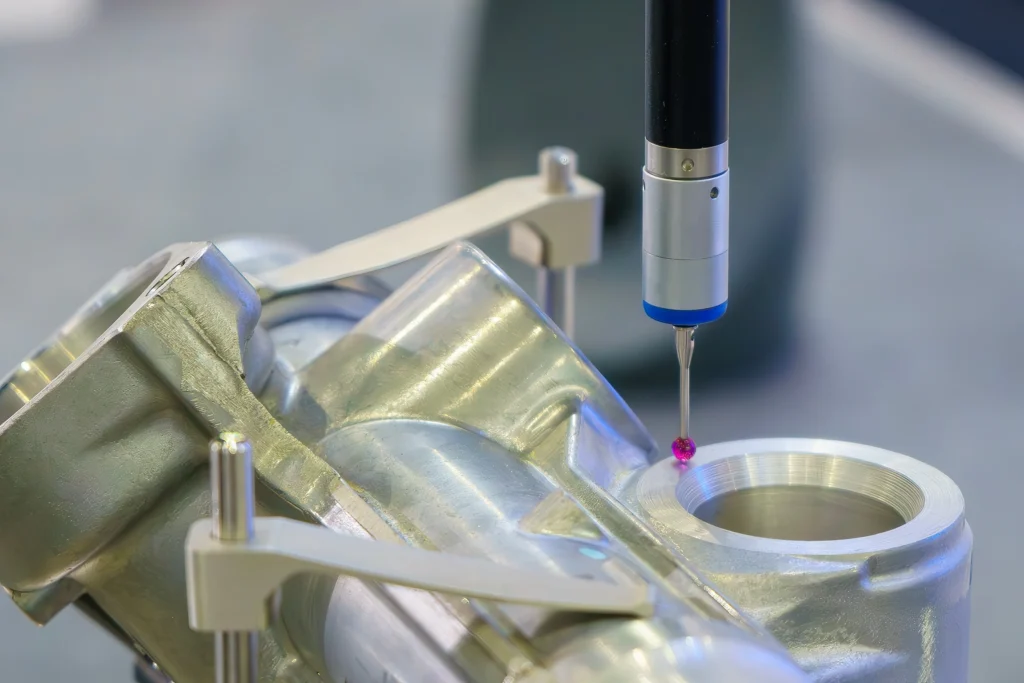Die-casting is a widely used manufacturing process that involves forcing molten metal into a mold cavity under high pressure. This method is known for producing complex and precise metal parts with excellent surface finishes. However, like any manufacturing process, die-casting comes with its own set of challenges. At Rapid Axis, we specialize in providing high-quality die-casting services, including aluminum die-casting, and have developed effective strategies to overcome these common issues.
In this article, we’ll explore some of the most frequent challenges encountered in the die-casting process and share our pro tips for addressing them.
Porosity Issues
Porosity, or the presence of small voids within the cast part, is a common problem in die-casting. These voids can weaken the structure of the part and affect its overall integrity. Porosity often occurs due to trapped gases, shrinkage during solidification, or improper cooling rates.
To minimize porosity, we employ several techniques at Rapid Axis:
- Optimized Die Design: We use advanced simulation software to design molds that promote uniform cooling and minimize air entrapment. Proper venting and gating systems are also incorporated to allow gases to escape.
- Controlled Cooling: We carefully control the cooling rate to prevent shrinkage-related porosity. This includes using cooling channels and thermal analysis to ensure even temperature distribution.
- Vacuum Die-Casting: For critical applications, we utilize vacuum die-casting to remove air from the mold cavity before injection, significantly reducing the risk of porosity.

Cold Shut Defects
Cold shut defects occur when two streams of molten metal fail to fuse properly during the casting process. This can result in weak spots or incomplete filling, compromising the part’s mechanical properties.
To prevent cold shuts, our team focuses on:
- Optimal Temperature Control: We maintain precise control over the temperature of the molten metal and the die to ensure proper flow and fusion. This involves preheating the die and maintaining the metal at the ideal temperature.
- Proper Injection Speed: We adjust the injection speed to ensure that the molten metal fills the mold cavity quickly and evenly, reducing the likelihood of cold shut formation.
- Mold Design Adjustments: By designing the mold with proper gating and runner systems, we can direct the flow of metal effectively, preventing cold shuts.
Surface Defects
Surface defects, such as roughness, flow lines, or blemishes, can occur in the die-casting process due to various factors, including improper mold release, turbulence, or contamination.
At Rapid Axis, we address surface defects by:
- Quality Mold Release Agents: We use high-quality mold release agents that provide a smooth surface finish while preventing sticking or build-up in the mold cavity.
- Clean and Maintained Molds: Regular cleaning and maintenance of the molds are crucial to prevent contamination and ensure a smooth surface. We also inspect molds for wear and damage that could affect the surface quality of the cast parts.
- Controlled Injection Parameters: We carefully control injection parameters, such as pressure and speed, to reduce turbulence and achieve a uniform surface finish.
Thermal Fatigue and Mold Wear
Repeated exposure to high temperatures and thermal cycling can cause thermal fatigue and wear in the molds used for die-casting. This can lead to dimensional inaccuracies and reduced mold life.
To combat thermal fatigue and mold wear, we implement the following practices:
- Use of High-Quality Materials: We use high-quality mold materials with excellent thermal conductivity and resistance to wear. This helps extend the life of the molds and maintain dimensional accuracy.
- Thermal Management Systems: We incorporate advanced thermal management systems, such as cooling channels and thermal barriers, to reduce thermal stress on the molds.
- Regular Maintenance and Inspection: Routine maintenance and inspection of molds are essential to identify and address wear before it affects production quality. We schedule regular checks and perform necessary repairs or replacements to ensure optimal mold performance.
Inconsistent Mechanical Properties
Achieving consistent mechanical properties, such as strength and hardness, across all cast parts can be challenging, especially when dealing with complex geometries or varying wall thicknesses.
Our approach to ensuring consistent mechanical properties includes:
- Process Parameter Optimization: We continuously monitor and adjust process parameters, such as injection pressure, temperature, and cooling rate, to ensure uniformity in the cast parts.
- Alloy Selection and Treatment: We select appropriate alloys and apply treatments, such as heat treatment or annealing, to enhance the mechanical properties of the parts.
- Comprehensive Testing and Inspection: We conduct thorough testing and inspection of the cast parts to verify their mechanical properties. This includes non-destructive testing methods, such as X-ray or ultrasonic inspection, to detect any internal defects.
Conclusion
The die-casting process offers numerous advantages, including high precision, excellent surface finish, and cost efficiency. However, overcoming the challenges associated with die-casting, such as porosity, surface defects, and mold wear, requires expertise and careful planning.
At Rapid Axis, we are committed to delivering high-quality die-casting solutions, including aluminum die-casting, by employing best practices and advanced technologies. Our team of experts is dedicated to ensuring that each cast part meets the highest standards of quality and performance.
Contact Rapid Axis today to learn more about our die-casting services and how we can help you overcome the challenges in your next project.
